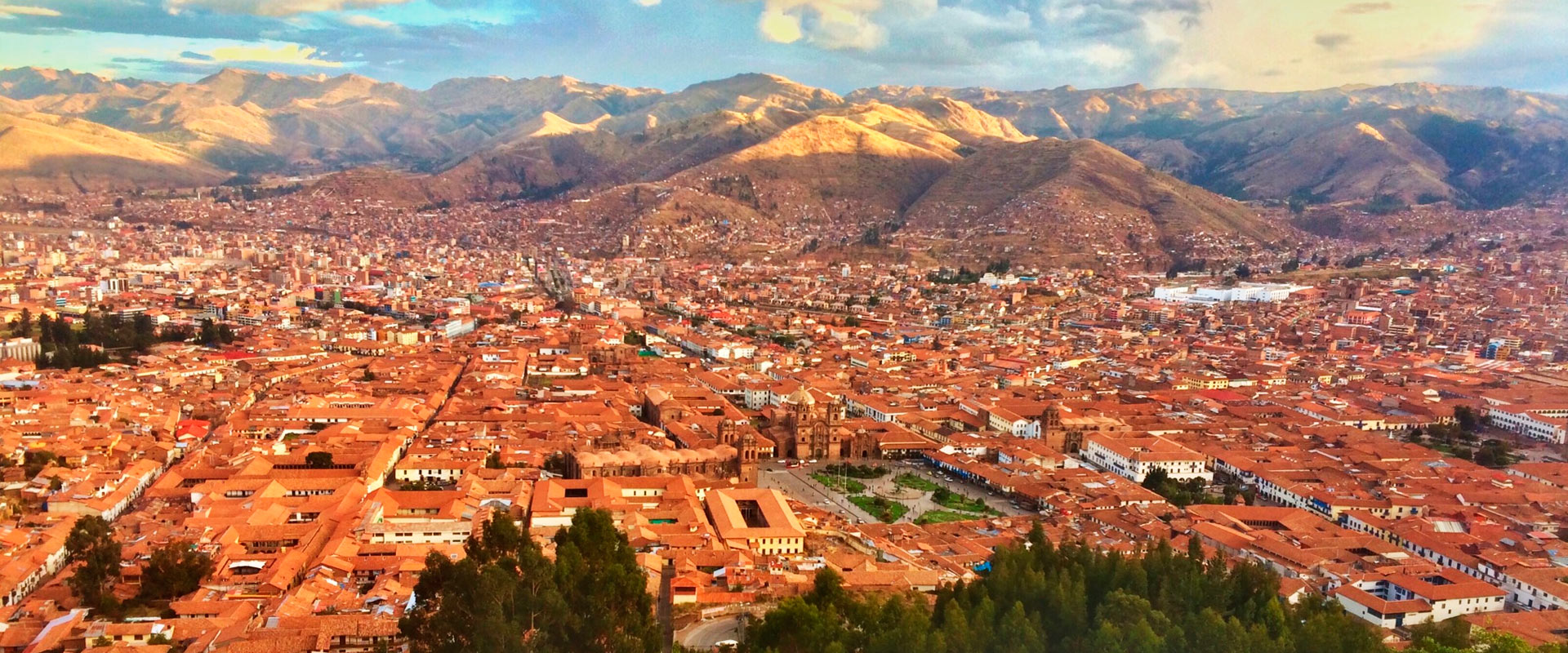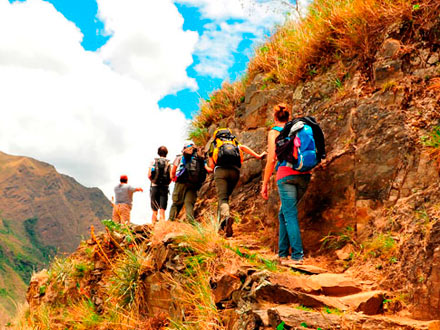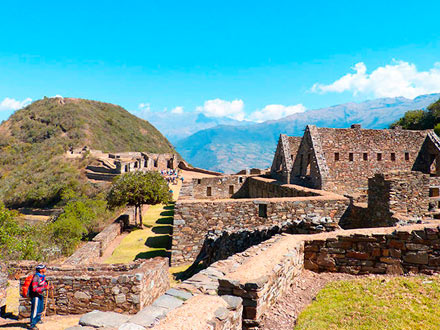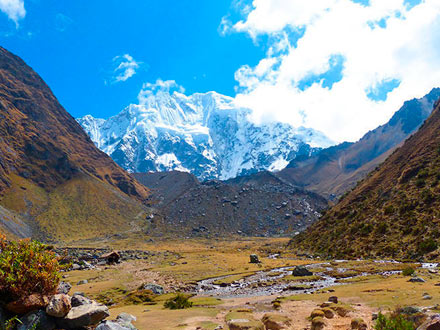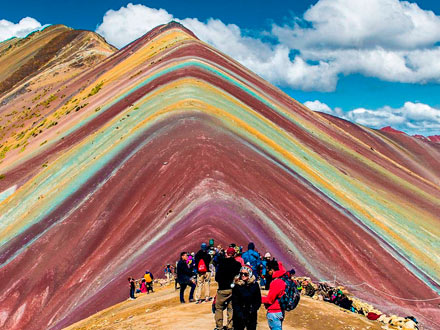Cusco Tourist Information , Cusco is located in southeastern Peru, the city is located at 3,400m (11,154 ft), with majestic homes that are the live portrait of two cultures, Inca and Spanish, and that now are monuments and tourist attractions of the immense richness the city has.
Cusco has a variety of climates and landscapes, the city is located in a transitional zone between the temperate and cold zones, so any time of year is good for visiting the city, because it has a consistently dry climate during all seasons: sunny during the day and cold at night. The rainy season is from December to March.
After visiting the cusco tourist attractions, you can visit the Puno tourist attractions, this is a good option if you want to see the highest navigable lake in the world.
Cusco Kwon as the heart of the biggest empire in the history of South America ,Cusco City was the capital of the great Inca Culture. Due to its majesty it has been considered the “Archeological Capital of America” At the moment it is considered to be the cultural patrimony of humanity.
Its name likely comes from an ancient indigenous word that meant “navel”, or figuratively “center”, in reference to an extensive network of roads leading from this capital of the Inca Empire called Tawantinsuyo to the four suyos or regions, that formed the four parts of the world view.
In South of Peru there is one of the deepest canyons in the world, the Colca Canyon, this is part of Arequipa Tourist Attractions, it is visited by tourists, after Machu Picchu in Cusco.
Cusco is certainly the most fascinating city in the Andes. Its monumental architecture admirably combines the majestic stone foundations of Inca buildings with the handsome architecture of colonial Peru. In the regions of Cusco you will find different and impressive Cusco tourist attractions such as:
Cusco Tourist Attractions
Sacsayhuaman, Religious Place
Sacsayhuaman is one of great feats of Inca engineering, this complex had great ceremonial significance in addition to its religious funtions. Its name means “satisfied hawk” in Quechua, Sacsayhuaman 2.5 km (15 min) from the center of the city via paved road, It is known for its enormous blocks of calcareous stones, many sided stones joined with astounding precision to form the outer walls.
Some of these stones stand over 9 m high and weigh over 120 tons. Sacsayhuaman is the most important temple in Hanan Qosqo or Upper Cusco might have been located there, dedicated to andean cosmology and to worship of the inti (sun), the quilla (moon) etc. This site took around 100 years to construct. It is the largest megalithic structure in the new world.
Qenko, Ceremonial Center
Qenko which means spiral or snail in Quechua, is a Inca ceremonial center at a natural rock formation that has been carved with designs. It also has a large altar rock, semicircular amphitheater and 5 meter (18ft) stone block that is said to represent a Puma.
Most interesting is the large outcropping of limestone that has been carved with intricate mythical figures related to worship of the earth (Pacha Mama) and series of twisting channels, for ceremonial use that must have given the places name.
Tambomachay, The Sacred Bathing place for the Inca
Tambomachay is a series of structures of finely worked stone. a hydraulic engineering marvel, its aqueduct system still feeds crystalline water into a series of showers where once water rituals were held by worshipers of the sun, the Incas.
It was likely used for a water cult, as water was one of the most important elements in the Andean worldview. As its name means “resting place”, it is said to have been a resort for the Inca, the Peruvian historians say that this was used by Inca Tupac Yupanqui as a hunting lodge, in addition to being a shrine, but it has no rooms or other facilities for this function.
Sacred Valley of The Incas
The Sacred valley of the incas, home to many of the tourist attractions that are so frequently visited by people of all over the world. The Sacred valley is located at 2850 m and lies 27 km (1 hour drive) northeast of Cusco, this valley stretches the length of Vilcanota river.
The valley lies between the towns of Pisac and Ollantaytambo. A succession of picturesque villages, terraces and others Inca archaeological sites, as well as sweeping farmlands planted with sweet corn and blessed with an exceptional climate, make a visit to this valley a must for all those who come to Cusco. We will see different towns along the sacred valley such as:
Pisac:
Pisac is a picturesque and major archeological site, Pisac is located 30km northeast of Cusco, It is a delighful place, the climate is pleasant, the people are agreeable, the agricultural terracing is a marvel. Pisac is the gateway to the Urubamba valley, features an old town an archaeological site considered one of the finest examples of Inca architecture, and a modern town of colonial origin.
Ollantaytambo:
Ollantaytambo is a pretty town, of Inca origin, It is located in the far western corner of the Urubamba Valley, 78 km northeast of Cusco. The town was named after the legendary rebel Inca general Ollantay.
Both the desing and foundation of most of the building date back to the original constructions of the Inca Empire. The streets still have their Inca design from the time when the town was a strategic military, religious and agricultural center.
Chinchero:
Chinchero is Inca original town, is located 30km north of Cusco, From the town one has spectacular views of the Vilcabamba and Vilcanota mountain ranges.
In the main square there is an enormous Inca period wall that contains 10 large trapezoidal niches in perfect condition. On the square there also stands one of the most important colonial churches of the region, with baroque style altars and numerous wall painting.
Maras Salt Mines and Moray
Maras is located 53 km northwest of Cusco, Maras was home to the descendents of the Incas of the Hurin Cusco Panaca, the town contains a large church and several colonial houses with the family coat of arms of noble families on their facades, we can visit these places on Maras moray tour.
Close to Maras, at the peasant community of Pichingoto, the salt mines, known locally as salineras and which have been exploited since pre-hisoanic times, In colonial times, it was the first salt producting center of the central sierra.
Moray is perhaps one of the most mysterious of the pre-hispanic Cusco are. The site consists of a large irrigation system and series of concentric agricultural terraces. The located is believed to have been an enormous agricultural laboratory in which the Incas purposefully created several micro climates in which to grow a variety of crops.



